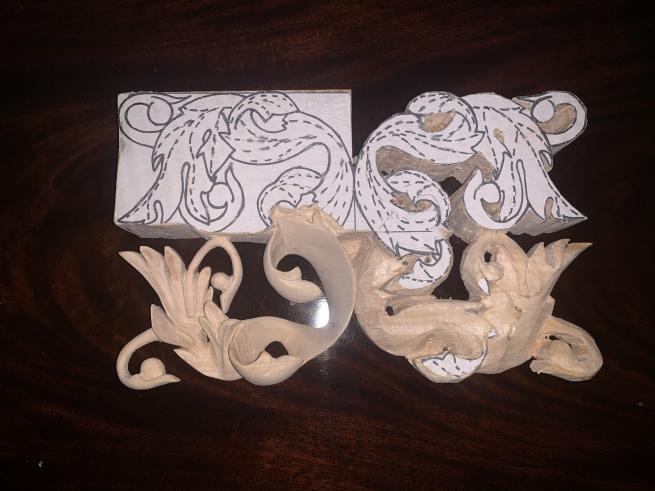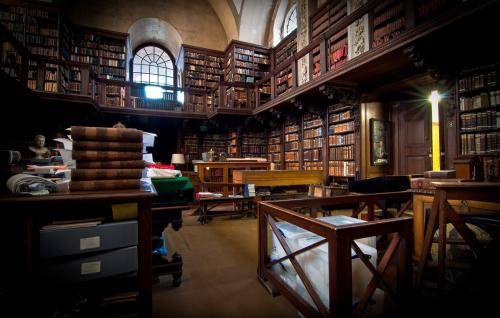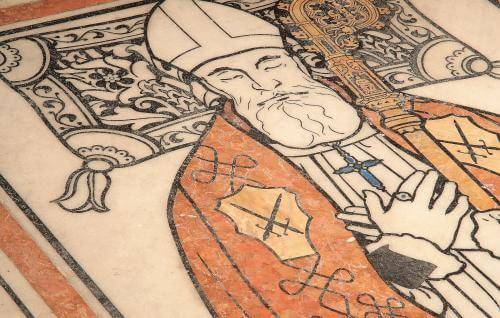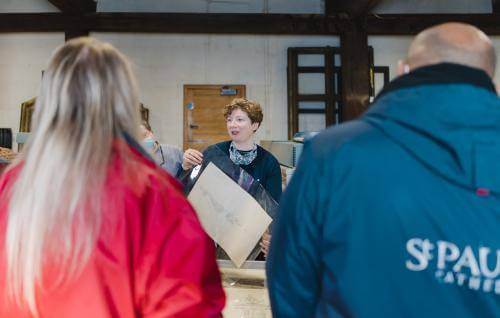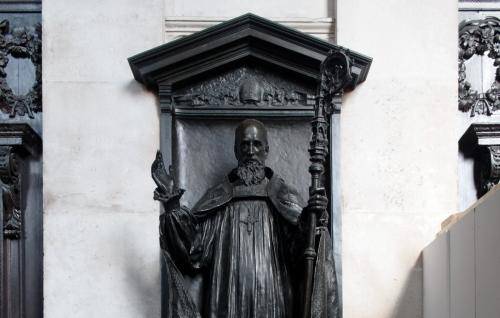Recreating the Quire carvings
Recreating the Quire carvings
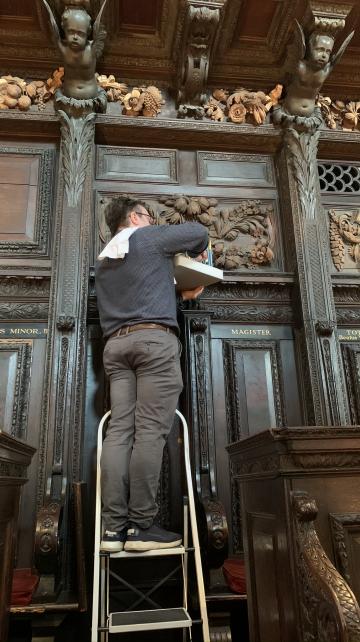
Understand how the Quire has evolved over the past 300 years and how those changes have created conservation considerations today.
The Quire at St Paul’s Cathedral is our beating heart. Since its completion in 1697, it has been used daily in services of worship and celebration, as well as being a favorite destination for our visitors to stop and take a moments quiet reflection.
Our historic quire stalls are brought to life by the intricate carvings of Grinling Gibbons. Delicate foliage, cascading flowers and majestic cherubs adorn every surface, transforming it from plain architecture to a piece of art. The Quire represents the changing faith of a nation over the past 300 years. Such delicate carvings come with unique challenges for care and repair within a working building.
1872: A new vista
The Quire we see today is very different from how Sir Christopher Wren and Grinling Gibbons left it 300 years ago. The worshipping life of the Church of England has developed greatly in England since the Reformation era in the sixteenth-century.
The greatest change to the Quire was the division of the Wren organ case in 1872, which allowed an unobstructed view of the Quire and High Altar from the west end of the Cathedral. This, alongside the liturgical revitalisations of the nineteenth-century, allowed a greater use of the Cathedral building and for new and creative styles of worship.
In the 1860s, the Surveyor Francis Penrose had found a drawing by Wren which proved that he had intended the organ to be positioned in the north aisle. In response, the Quire stalls and carvings were dismantled and the organ case moved, but this new location was found impractical. The organ case was dismantled once more to create the configuration we see today.
To create balance and symmetry, new carvings – including an entire organ front – were made, and the organ was reduced in height to fit into the bays of the Quire aisles. Gibbons' carvings, which were already 175 years old, were adapted and repositioned.
1920s: Wartime restoration
In 1940, a bomb landed in the Nave of the Cathedral and the Quire narrowly escaped destruction. As a precaution, it was dismantled and sent away for safe storage in rural Buckinghamshire.
At the end of the war in 1945, there was a sense of urgency to rebuild the nation and instil a sense of normality. Great swathes of London were being rebuilt at speed and the Quire of St Paul’s was no exception, being reassembled in a hurry. Even more nails were used to attach the carvings – sometimes as many as five in one flower. The old glue had dried and become brittle, with loose joints and detached mouldings throughout the Quire stalls. It was in desperate need of interventive conservation.
1980s: A fresh approach
In the 1980s, Tony Webb became the Master Carver of St Paul’s and began a 20-year project to consolidate and restore the Quire. Tony and his assistant Hannah Hartwell were the first people to adopt the principles of conservation to care for the Quire. Their understanding and sensitivity to the physical constraints of Gibbons' carvings is why the Quire is in such good condition today.
Tony and Hannah are responsible for the delicate repairs to the lime wood foliage and floral sprays. They approached their repairs with restraint, replacing losses only when they were needed to interpret Gibbons' original design. Iron pins and nails were removed and replaced with small brass screws that did not corrode and split the wood. Fibreglass mesh and bamboo dowels was added to provide strength and support.
Tony and Hannah also had a policy to colour the newly-carved pieces they created using water based Van Dyke Stain for the oak and gouache paints to tint the lime repairs. At the end of their project, it was decided that they would colour all of their repairs as a single project rather than individual pieces, to make sure the Quire had the same uniform colour. Unfortunately, this did not happen before Tony’s retirement, so the carvings were left in their raw state.
2021: Completing the work
In 2021, a detailed evaluation of the condition of the Quire stalls was undertaken. The Quire stalls were divided into a grid and each section was allocated an individual reference number. The conservators used digital photography to create high resolution images of the carvings, their repairs and current condition.
The evaluation showed that the carvings needed a significant clean, before the conservation team could stain them as Tony and Hannah had intended. In order to ensure the carvings were cleaned as carefully as possible, our conservators spoke to peers who care for Gibbons' legacy within working collections across the UK. They then used a cleaning procedure developed by this group, which involved gently brushing the surface dust from the intricate carvings using a small hog’s hair brush into a mesh-covered nozzle of a portable vacuum cleaner.
The mesh prevented small pieces being sucked up into the vacuum cleaner. Once this initial stage was completed, compressed air was used to blow dust from any hard-to-reach areas, and any ground-in dirt was removed using smoke sponges. To complete the toning work, the conservators developed a toning technique using Van Dyke water stain made from walnut husks and earth pigments. It was designed to gently blend the new lime wood repairs to the existing Gibbons carvings.
The final stage of the treatment applied rotten stone to remove any sheen and gently blend the finished surface. The repaired carvings are toned following the six-foot rule: when they are viewed at a normal distance, you cannot see the repairs, however up close or under strong light they are clearly visible. This approach allows future generations to read the narrative of conservation work and keeps an honest distinction between new and old.
The carvings can now be viewed as a whole and your eye is not drawn to the repairs, but can appreciate the genius of Grinling Gibbons.
